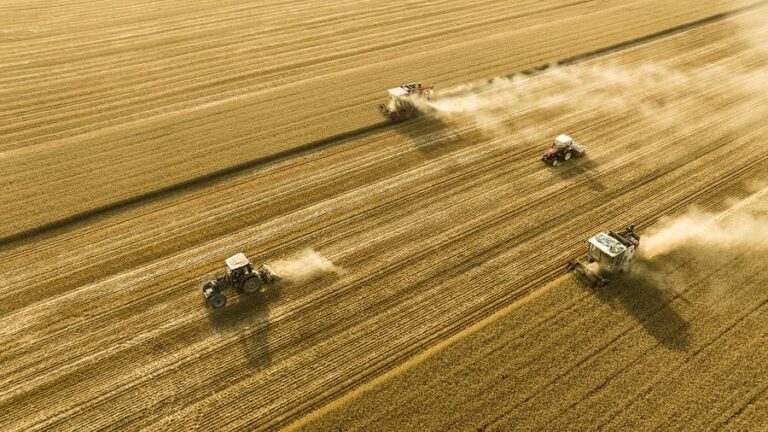ZHENGZHOU, July 2 (Xinhua) — Beneath the blazing midday sun in Zhangzhuangli Village, Qingfeng County, in central China’s Henan Province, an intelligent patrol drone soared into the sky, tracing graceful arcs against the clear blue backdrop.
Below, driverless harvesters swept through golden wheat fields with surgical precision, funneling grain into waiting trucks, while nearby sensors activated smart irrigation systems to quench the soil’s thirst drop by drop.
These scenes come from the first wheat harvest at Henan’s inaugural fully unmanned wheat-corn rotation farm, offering a glimpse into the future of agriculture in China.
Designed by scientists at Henan Agricultural University as part of the “sci-tech backyard program,” this farm covering 3,500 mu, or about 233 hectares, in Qingfeng has turned a once-distant dream into reality by achieving fully unmanned plowing, planting, management and harvesting.
“For generations, harvest meant the whole family sweating in the fields,” said Zhou Jianshi, head of the local agricultural machinery cooperative, as an autonomous harvester rumbled past. “Now these ‘iron workhorses’ do it all on their own. It’s simply amazing.”
This summer, the farm deployed an army of intelligent machines — from driverless harvesters and tractors to air-suction seeders, precision irrigation systems and scouting drones — all operated through China’s domestically developed BeiDou navigation satellites.
According to Zhou, the shift has brought dramatic efficiency gains. “With the autonomous system, we have been able to reduce harvesting time from seven days to four,” he said, adding that labor for water and fertilizer management dropped by 80 percent, while overall human costs fell by 40 percent.
“But efficiency jumped by 30 percent compared to last year’s traditional methods,” he noted.
Behind this transformation lies integrated automation, with robotic tillers preparing the soil, smart planters detecting missed seeds, drones monitoring crop health and pests, and AI coordinating the entire harvest.
In the farm’s mission control room, giant screens flicker with real-time data on soil moisture, seedling density and pest alerts, painting a digital portrait of the fields.
“Our drone patrol system collects field data at 10 points every 30 minutes between 9 a.m. and 3 p.m. daily,” said Wang Qiang, director of the Qingfeng sci-tech backyard program and an associate professor at Henan Agricultural University.
“Predictive models translate the data into growth patterns, yield forecasts, and precise water needs,” Wang added.
The smart irrigation system divides the fields into six zones, watering each according to the specific needs of the crops.
Zhou said that irrigation labor fell 90 percent, with work that once needed 10 people now done by one using a smartphone, while precision fertilizer cut chemical use by 20 percent and boosted absorption efficiency by 30 percent.
The results are inspiring, said Wang, noting that the smart farm’s debut report showed an impressive 20 percent increase in wheat yield compared to nearby conventional fields.
“The core is matching water and fertilizer to the crop’s exact needs,” explained Ye Youliang, founder of the “sci-tech backyard program” and a professor at Henan Agricultural University.
“Integrated water-fertilization systems allow us to deliver nutrients precisely when and where the plants need them, resulting in less input, higher quality, and truly sustainable farming,” he added.
Standing amid the vibrant fields, Wang envisions a far-reaching transformation on the horizon.
“Qingfeng offers a replicable model for China’s agricultural modernization,” he said. “Next, we’ll refine full-process unmanned tech, cut costs further, and amplify these efficiency gains.” ■

